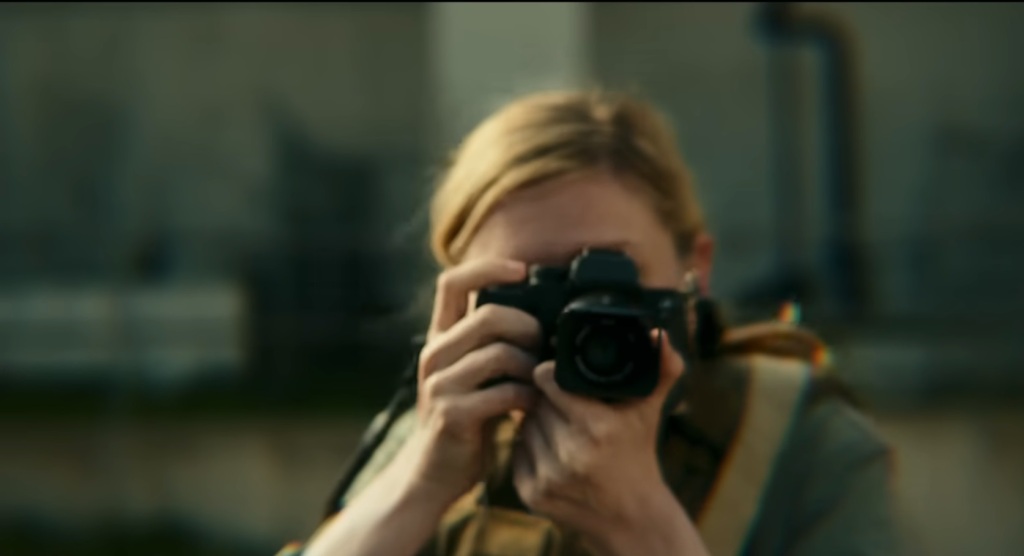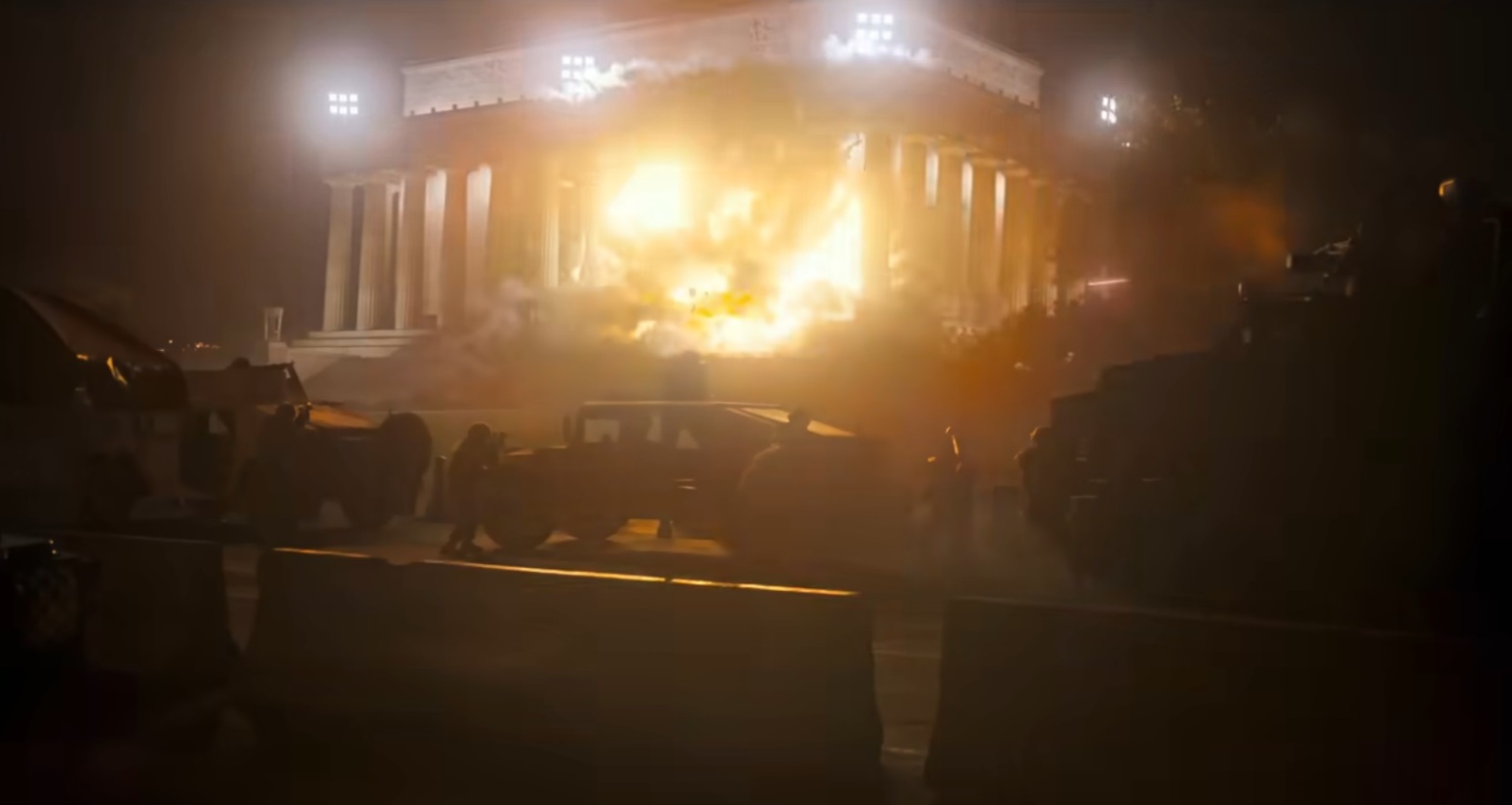Civil War (Alex Garland): *** ½
Did A24 choose the title for Alex Garland’s Civil War instead of him? It’s a dream distributor company name that maximizes butts in seats because it teases action-packed entertainment that doubles as a profound commentary on America’s political woes. However, the movie often betrays this supposed premise. Garland delivers the imaginative carnage, but is allergic to taking political stands, which prevents any insight.
But what if Civil War does not aim to explore a fictional American civil war? What if it had a different title to focus on the surrogate mother-daughter bond formed between veteran wartime photographer Lee (Kirsten Dunst) and amateur photographer Jessie (Cailee Spaeny)? What if it was called Like Mother, Like Daughter? The film would sell far less tickets, but the title would more truthfully capture its artistic success.

Lee and Jessie develop their relationship in the near future in an America gripped by Civil War. Lee is a renowned wartime photographer determined to get to Washington with her journalist partner Joel (Wagner Maura) to interview the President (Nick Offerman). The two are weary of taking anyone else partly so nobody scoops them on their planned interview but also because they’ve been told journalists are shot on sight by the President’s military in the nation’s capital. However, the duo lets former mentor Sammy (Stephen McKinley Henderson) ride along because he needs to get to Virginia and is too old to reach there on his own. Then there’s Jessie, whose life is saved by Lee in a suicide bombing attack at a protest the two of them film. Jessie’s so motivated to follow in the footsteps of her inspirational hero Lee that she flirts with Joel to worm her way onto the journey. At first, Lee objects, but seeing her young self in Jessie, she relents.
So Lee, Joel, Jessie, and Sammy go on a road trip through a war-torn nation. Garland exploits the voyage and the characters’ photography careers to craft funny, thrilling, and chilling sights of an America besieged by modern civil war. A humorous driver-less traffic pileup on a highway communicates how such a conflict turns ordinary signs into visions of abandonment. Suspenseful sequences often concentrate on soldiers sniping or shooting at our journalists. One poignant moment shows an army carrying portable, mass-produced coffins to reveal death’s normalization. Along with a heart-racing sequence of soldiers storming the White House, such compositions allow Garland to create absorbing entertainment out of his fantasy of crumbling America.

But Garland’s fantasy does not feel real because he never takes a stance on what could cause such a terrifying upheaval. Early, he mixes the President’s speech declaring victory with real-life news footage of contemporary American social unrest. The provocative crosscutting implies a link between our current political turmoil and his picture’s catastrophe, but the movie never elaborates on this connection. In an unintentionally hilarious scene, a character references the “Antifa massacre” as a major moment in Garland’s conflict but does not clarify if that name applies to victims or perpetrators of the massacre. When Garland supplies details, they’re nonsensical: the main oppositional armies—“the Western forces”—are led by ideological enemy states Texas and California. For a work with such a political title, Civil War is radically apolitical. This might seem refreshing in an era in which art and artists consistently bow to culture war pressure. However, without a perspective on how a conflict like this could unfold, on what ideas could bring about so much damage, Garland’s civil war feels artificial. Yes, his strong visual representation of this calamity evokes a variety of feelings, but they only amount to an entertaining rollercoaster ride not a harrowing emotional experience.
Perhaps Garland’s point-of-view about civil war is not lucid because his passion lies elsewhere? The four journalists in the car rarely talk about the war’s causes or logistics despite the fact that they would be well-read and sourced enough to discuss these matters. Rather, Lee, Joel, and Sammy give pointers to Jessie on how to get a good war shot while also making it clear to her that doing so risks her life and desensitizes her to the suffering her camera records. The idea that wartime photographers may have to become numb to people’s pain in order to document it for millions to react to genuinely fascinates Garland in a way politics doesn’t. He conjures sequences observing Lee and Jessie’s adrenaline over filming the death and destruction around them. He cuts flashback scenes of Lee remembering the violence she filmed and buried in her past. And he creates visual parallels between Lee and Jessie snapping photos and soldiers firing bullets—between shooting and shooting.

Such filmmaking is intellectually stimulating but unconvincing. Journalists are often honest about how the prospect of a great shot or story motivates them more than morality or humanity, but it seems far-fetched they would prioritize their professional glory to the all-encompassing degree Garland depicts. Do they really force down pain and trauma so neatly and cleanly? Are they truly like soldiers because they resemble combatants when they crouch down with equipment? Maybe if Garland’s movie was set in the past or present instead of the future, he wouldn’t raise such doubt; by replacing historical information and present details with future vagueness, Garland causes his examination of journalism to feel like one of his sci-fi concepts in the vein of Ex Machina or Annihilation: intriguingly possible but not real.
There is one element of Garland’s picture, though, that he seems both passionate about and capable of treating convincingly: Lee and Jessie’s complicated love as surrogate mother and daughter. Actresses Dunst and Spaeny help Garland a lot here, as the two brilliantly convey rapidly evolving intimacy despite the hustle, bustle, and noise around them. The movie’s car trip conceit also sells the idea that there is a warm and fun atmosphere that can allow nurturing bonds to grow between Lee and Jessie even with all the blood and ash in the air.

And yet, the key ingredient that makes the duo’s dynamic compelling and memorable is the way Garland evokes Lee’s internal conflict over her influence on Jessie. Civil War’s drama is at its finest when it explores how Lee wishes to avoid teaching Jessie how to desensitize herself to pain the way Lee has learned to do in her work. What makes this desire so richly gutting is how it contradicts Lee’s knowledge that she is best equipped to guide Jessie on the trail Jessie has chosen for herself. Only Lee can ensure Jessie survives wartime journalism, attains it rewards, and perhaps evades its lowest depths. The push-pull Lee feels at showing Jessie the ropes of her profession is like what a mother raising a child in a dysfunctional family experiences. She realizes that just because her child is born to a broken home does not mean she can turn away from helping her daughter figure out how to navigate that family dynamic. Parenting her child in such a cruel environment the mom is an expert in is the only way to help her daughter flourish even as it risks her child inheriting the family’s worst traits.
Matching the thorniness, intensity, and emotional volatility of Lee’s discovery of her surrogate maternal duty is the heartbreak of Jessie’s own realization that she has received all of Lee’s wisdom, her admirable and callous professional characteristics, by the end of this journey. Jessie understands that Lee has molded her into the inspirational figure she always looked up to at the expense of being fully human. She ends up like a daughter thankful her mom gave her tools to survive and thrive in a tattered family while sensing that such tools allow her to find belonging in a chaotic home that will torment her for years to come.

Lee and Jessie’s relationship, then, is a vibrant, heartening, and painful one between hardened educator and untested student, scarred mentor and pure learner, tragically knowing mother and crushingly innocent daughter. This metaphorical parent-child link elevates Garland’s Civil War, which often feels like an impressive but hollow look at barbaric American self-destruction and a cerebral but unpersuasive analysis of wartime journalism. The movie lodges in the brain and heart because Garland paints a perfect portrait of a mother and daughter bond tinged with gratitude and regret. He snaps one flawless picture of an imaginative, complex, and human connection, which is the most important image any artist could capture.
